What are the different types of window films available?
There are several different types of window films available, each
with its own characteristics and functions. The main types are as
follows:
- Solar - control window films: These films are designed to block a significant amount of solar
heat and ultraviolet (UV) rays. They can reduce heat gain in
summer, lower energy consumption for air - conditioning, and
protect indoor furniture and floors from fading caused by UV
exposure.
- Privacy window films: They provide privacy by obscuring the view from the outside while
still allowing some light to enter. Some privacy films have a one -
way - mirror effect, which means people inside can see outside
clearly during the day, but outsiders can't see in.
- Security window films: These films are made of tough materials that can enhance the
strength of the glass and prevent it from shattering easily. In the
event of an impact or burglary, they hold the glass fragments
together, reducing the risk of injury and preventing easy access
into the building.
- Decorative window films: They are mainly used for aesthetic purposes. They come in various
patterns, colors, and textures, which can add a decorative touch to
the windows and enhance the overall appearance of the space.
- Anti - glare window films: These films are effective in reducing glare from sunlight and
artificial light sources. They improve visibility and visual
comfort, making it easier to see through the window and reducing
eye strain.
- Low - E (low - emissivity) window films: They have a special coating that reflects heat back to its
source. In winter, they help keep the heat inside the building,
reducing heat loss, and in summer, they can block external heat,
similar to solar - control films. They are energy - efficient and
can help maintain a more stable indoor temperature.
What are the differences between different types of window film?
Type | Core Structure Characteristics | | Applicable Scenarios |
Dyed Film | Only dye layer + glue layer | 1-1.8mil | Low-end model, limited budget |
Metallic Film | Multilayer metal + polyester substrate | 2-3mil | In high temperature areas, pursue high insulation |
| Nano Ceramic Film | Nano-ceramic particles + PET layer | 2-4mil | High-end models with signal penetration |
| Privacy Film | Dark dye layer + one-way perspective technology | 2-3mil | Commercial/luxury cars, privacy oriented |
The main structure of car window film

What are the benefits of car window film?
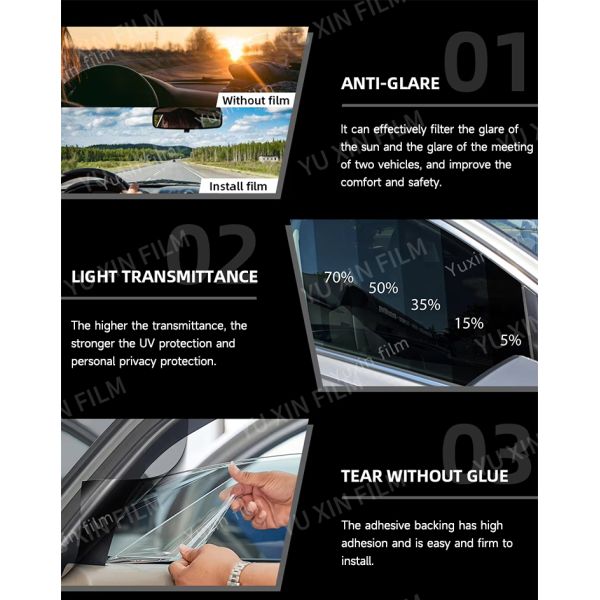
1.Choose the right film: Select a window film that suits your specific needs, such as
solar - control, privacy, or security. Consider factors like the
amount of sunlight your windows receive, your privacy requirements,
and the climate in your area.
2.Check local regulations: Before installing window film, check the local laws and
regulations regarding window tinting. Some areas have restrictions
on the darkness and type of film allowed, especially for vehicle
windows.
3.Professional installation: It is recommended to have the window film installed by
professionals. They have the skills and tools to ensure proper
installation, which helps avoid issues like bubbles, wrinkles, or
improper alignment.

4.Clean the window thoroughly: Before installation, clean the window glass carefully to remove
any dust, dirt, or grease. This ensures good adhesion of the film
and a smooth finish.
5.Allow proper curing time: After installation, allow the window film sufficient time to
cure. This usually takes a few days, during which you should avoid
touching or scratching the film and refrain from opening and
closing windows frequently (for vehicle windows).
6.Use proper cleaning methods: To clean the window film, use a mild, non - abrasive cleaner and
a soft microfiber cloth. Avoid using ammonia - based cleaners or
sharp objects that could damage the film.

7.Inspect regularly: Regularly check the window film for any signs of damage, such as
peeling, cracking, or fading. If any issues are found, have them
addressed promptly to prevent further damage.
8.Be aware of heat build - up: While window films can reduce heat gain, in some cases, they may
cause heat to build up between the film and the glass. This is more
likely in hot climates or with darker - tinted films. Ensure proper
ventilation to prevent excessive heat build - up.
9.Consider warranty: When purchasing window film, check if it comes with a warranty.
Understand the terms and conditions of the warranty to ensure you
are covered in case of any defects or premature failure of the
film.
10.Compatibility with other products: If you plan to use other products on the windows, such as window
cleaners or sealants, make sure they are compatible with the window
film to avoid any adverse reactions.
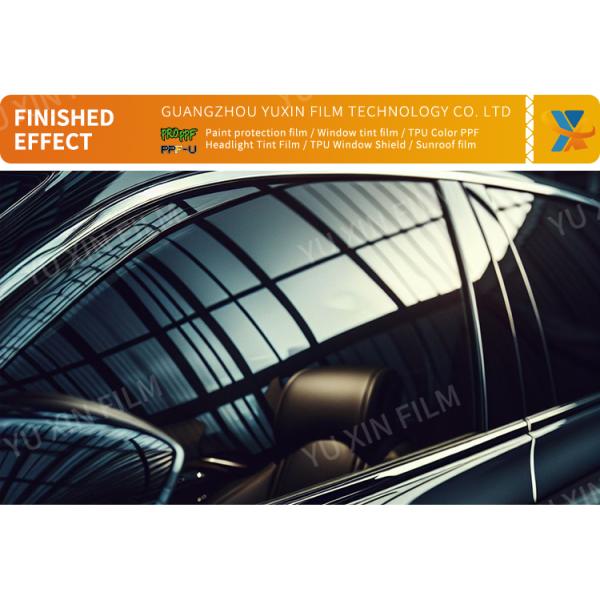
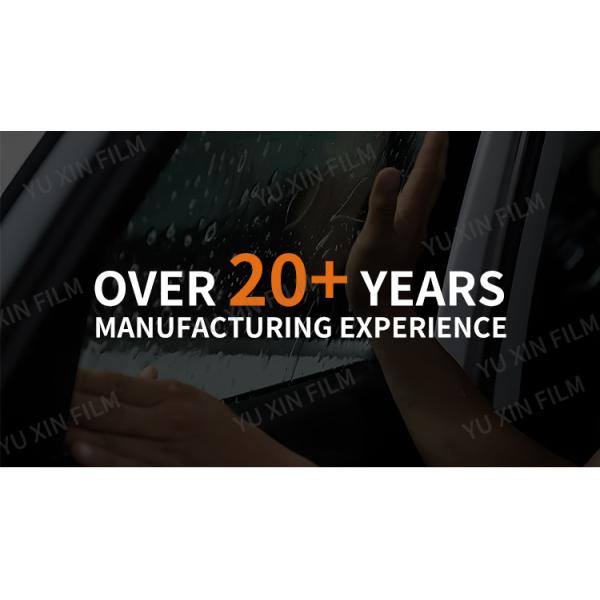
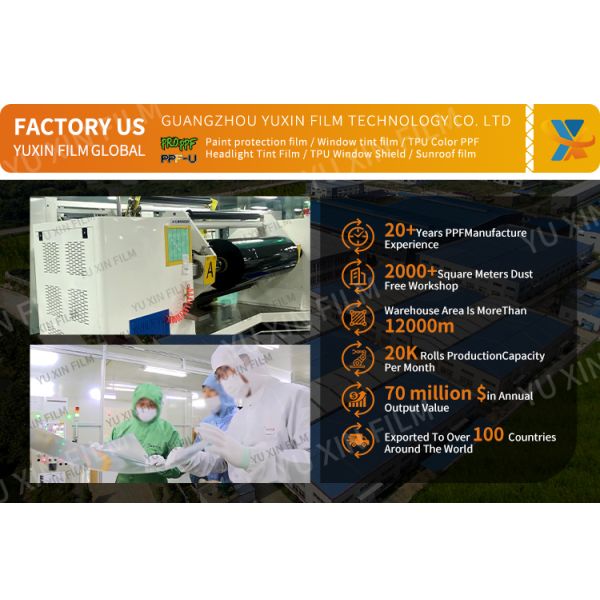
As a vertically integrated manufacturer, we control the entire
production process—from functional masterbatch formulation to base film extrusion, coating application, slitting, and finished product assembly. This seamless supply chain ensures superior quality control, cost
efficiency, and rapid customization for all paint protection film
(PPF) solutions.
Equipped with top-tier fully imported TPU film production lines, we combine global precision with independent R&D upgrades to
refine equipment performance. Our advanced machinery enables us to
produce high-quality TPU base films with exceptional clarity,
durability, and dust-free surfaces—critical for premium paint
protection.

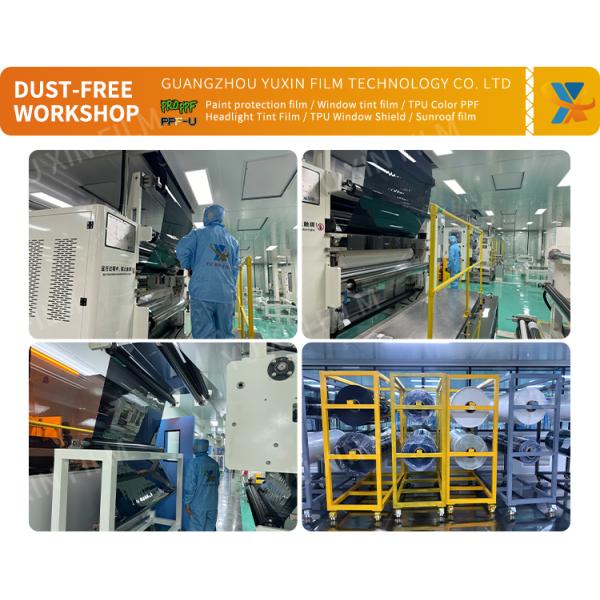
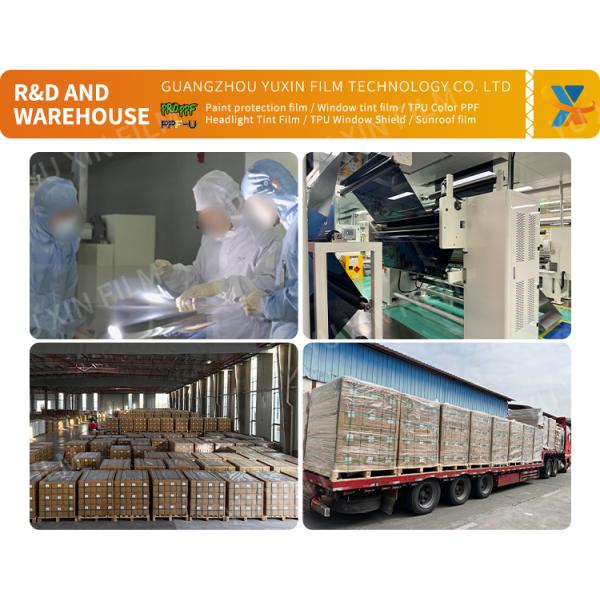
Our multidisciplinary team includes:
- Thermoplastic Elastomer Polymer Specialists: Optimizing material properties for superior adhesion, UV
resistance, and self-healing performance.
- Mechanical Equipment Engineers: Ensuring precision in every production stage, from extrusion to
coating.
- Production Technology Experts: Mastering processes to achieve uniform thickness, flawless
surface finish, and consistent product quality.
- Dedicated QC Professionals: Conducting rigorous pre-shipment inspections to guarantee
alignment with sample standards and dimensional accuracy (e.g.,
film length compliance).
Before shipment, our QC team meticulously verifies:
- Product-Sample Consistency: Ensuring every batch matches the approved prototype in texture,
thickness, and performance.
- Spec Compliance: Checking film length, width, and mechanical properties to meet
exact customer requirements.
- Dust-Free Purity: Maintaining cleanroom-grade production environments to eliminate
surface imperfections.
With a large-scale warehouse stocked with TPU paint protection film, automotive window film, architectural
decorative film, TPU windshield film, and colored PPF, we enable immediate order fulfillment. Our streamlined logistics ensure your products are delivered
promptly, reducing lead times and enhancing supply chain
reliability.
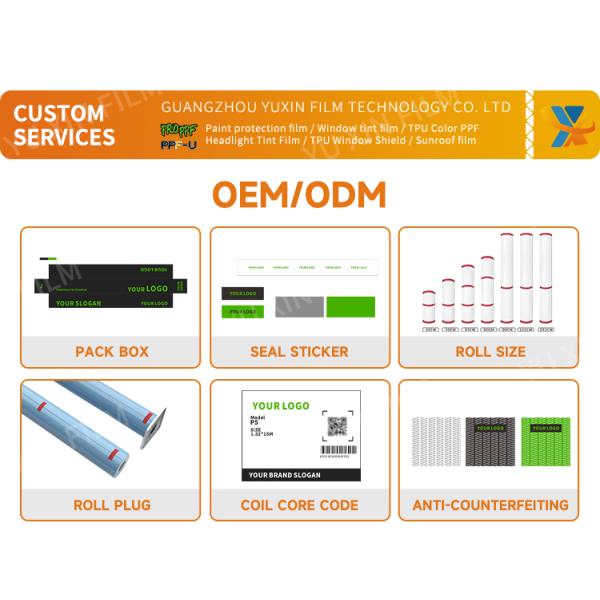
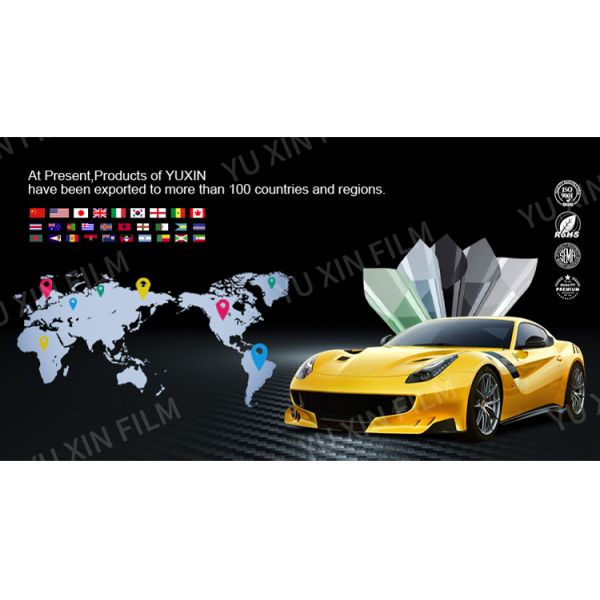
FAQ:
Q: What makes your nano-ceramic film unique?
A: Our film combines superior scratch resistance, high heat
rejection, and ultra-clear optical clarity, setting industry
standards.
Q: Is it suitable for automotive and architectural use?
A: Yes, it’s versatile—designed for car windows, facades, and
interior glass, ensuring comfort and energy savings.
Q: How long does the film’s performance last?
A: Backed by a 10-year warranty, it maintains durability, UV
protection, and color stability over time.
Q: Can it block harmful UV rays?
A: Absolutely. It blocks over 99% of UV radiation, safeguarding
against sun damage and fading.
Q: Is installation complicated?
A: No. Our film is engineered for easy, bubble-free application, and
we offer installer training for seamless results.












